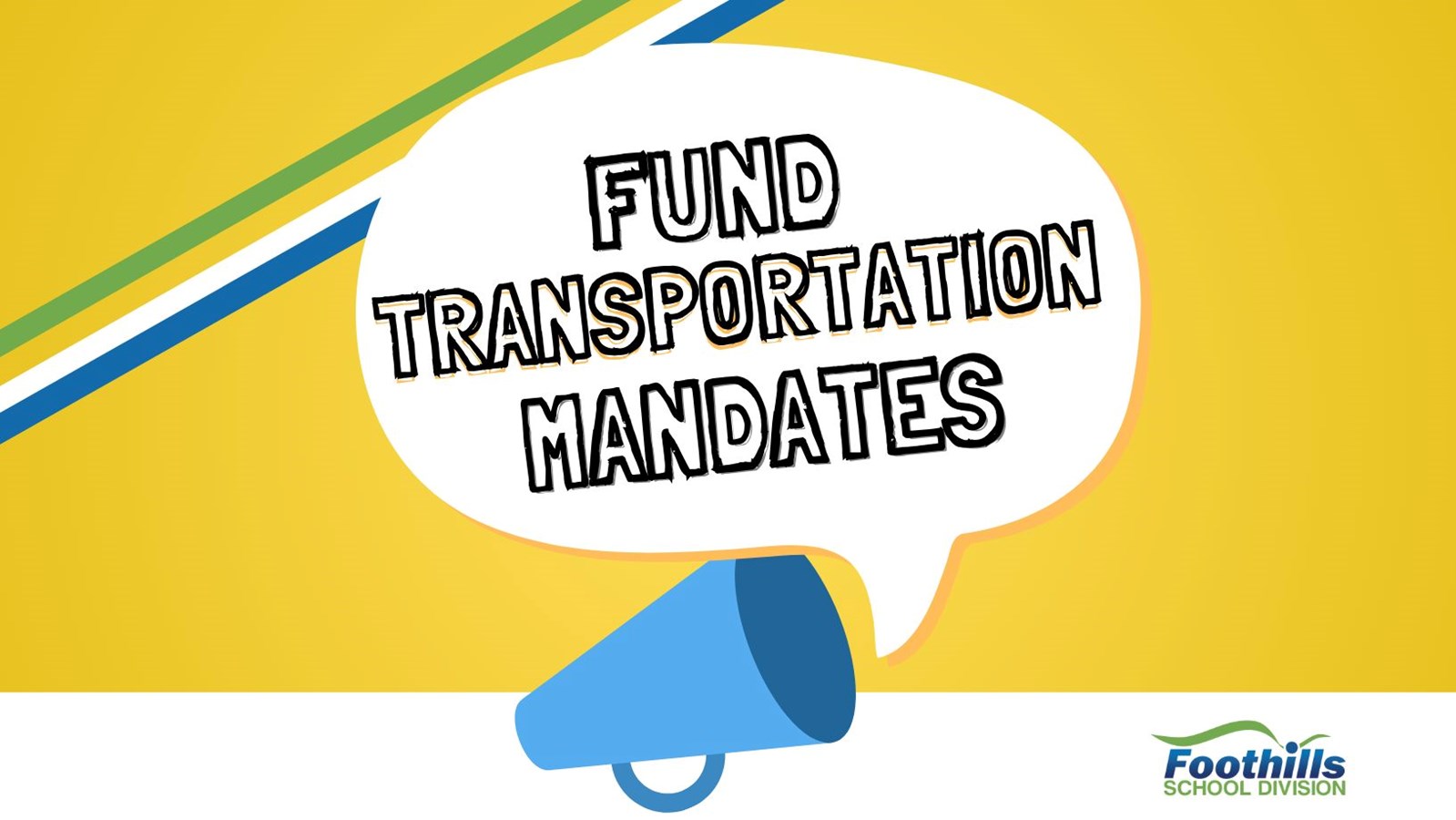Priority: Transportation Funding

Increase Transportation Funding
The Facts
- Under the Education Act, school authorities are legally obligated to provide transportation for students to and from their school if the student resides within the boundaries of the school division. The School Transportation Regulation sets the criteria for school authorities regarding who they are obligated to provide service to meaning, if the student lives beyond a certain distance from the school, they are eligible for transportation service.
- Recommendation 15 of the 2021 Student Transportation Task Force: Report to the Minister suggested:
Alberta Education maintain the current eligibility distance criteria until the Student Transportation Audit Team has completed its initial review.- The public has not been informed of the results of the review, to show that the new walk limits are evidence informed.
- In April 2023, Alberta Education announced that it would change school transportation funding to include more students.
- Budget 2023 announced new walk limits for students from 2.4km to 1.0 km (grades 1 – 6) and from 2.4km to 2.0km (grades 7-12) for students.
- UPDATE: December 2024 – the Minister of Education shared that the 1.0 km distance would be extended to 1.6 km for September 2025
- The criteria includes:
- reducing the maximum distance from a student’s residence to their bus route and,
- modifying the distance calculation so it uses the shortest driving route – walking paths are no longer included.
- Originally set to take effect in the 2024-2025 school year, the Minister announced a delay in implementation until September 2025.
- The March 2023, $414 million announcement from Alberta Education for student transportation included expanded transportation funding for independent and alternative programs, such as charter schools, francophone schools and private schools.
Financial Implications for FSD:
- With the reduced walk limits set to come into force September of 2025, Foothills School Division will need to purchase up to 10 school buses to service schools and families in Okotoks and High River, with a projected cost of $1.7 million.
- Foothills School Division receives grants from the provincial government to provide for the transportation of students to and from their designated schools.
- Grants are only provided for students who are eligible for bussing.
- These grants only cover a portion of the cost of providing transportation and FSD does not receive third-party funding for students who are ineligible for bussing.
The current Alberta Education funding model for transportation is based on 2013 data - costs for supplies, buses, insurance, and human resources have increased significantly since 2013.
- Adjustments for these factors have been inadequately funded.
- The current funding model funds all eligible students.
- In September funding will only be provided for those that are less than the 2.4km who ride the bus.
- This is very difficult to plan and provide service for if these numbers fluctuate significantly.
- Every year, for the last 7+ years, FSD has had significant ($244,000 and up) shortfalls in transportation expenses over revenue. This shortfall is covered by operational funding – the funding envelope for classrooms and teachers or administration funding.
- In September 2023 the Government of Alberta announced a one-year initiative allowing school boards to borrow the funding for the additional – mandated – buses. This ‘loan’ would be amortized over 10 years. FSD opted to delay purchasing new buses and instead reinvested in frontline staff.
Indirect Impacts:
- Given that the walk-distance calculation has been modified so it uses the shortest driving route – and no longer includes walking paths – there will be significantly more traffic on roads around schools in Okotoks and High River.
- As a school board that represents both rural and urban populations, the one-size-fits-all transportation funding disproportionately impacts rural students. With an addition of approximately 1,200 students qualifying for busing in our urban boundaries, the transportation funding shortfall is coming out operational funding – classrooms across the entire division.
Proposed Solutions
- Revisit how the 1km and 2km distance is calculated in urban versus rural settings.
- A collaboration between local school divisions and urban municipal bus systems.
- A collaboration between local school divisions to offer a shared transportation service to student populations.
- Adequately finding school divisions at 2025 costs to remove the necessity of drawing on classroom finds to supplement legislated transportation services
- The purchasing additional busses could be handled by the Government of Alberta so that this cost is not drawn from school board operational funds

